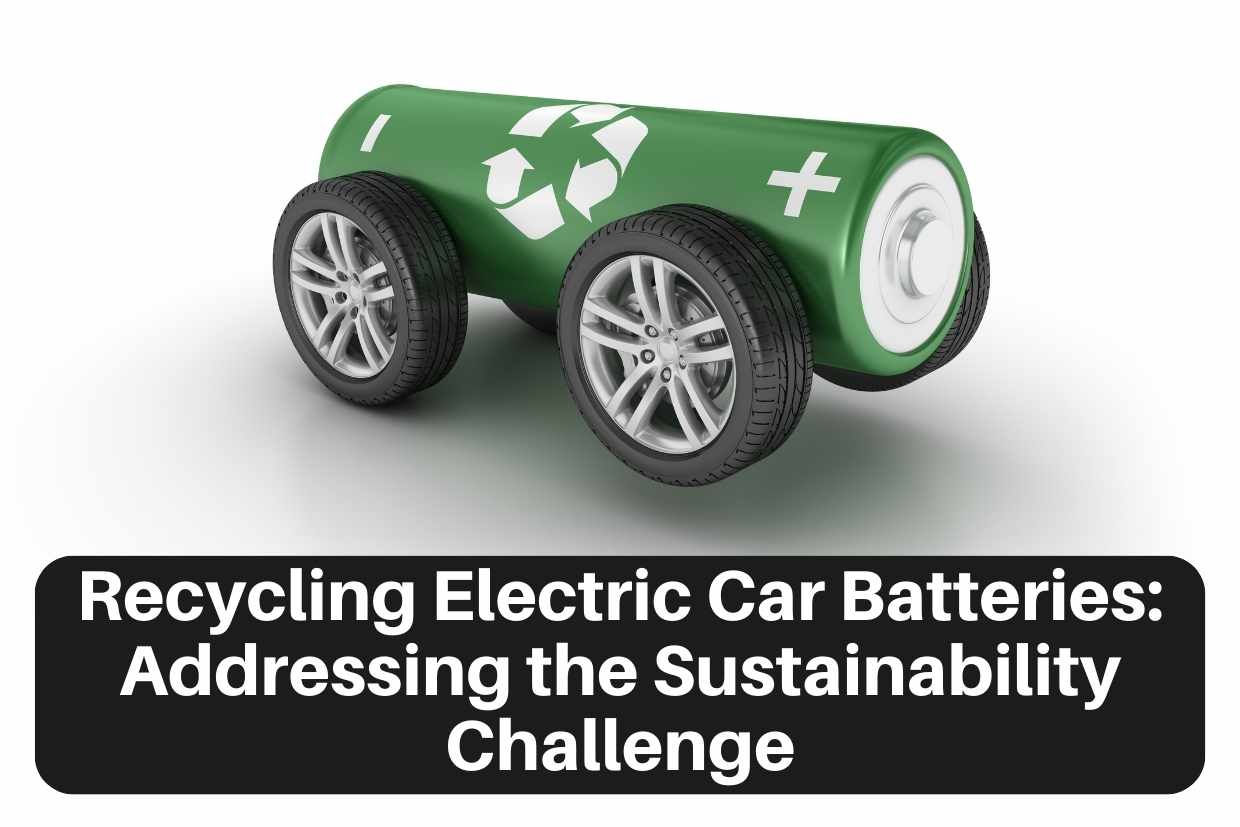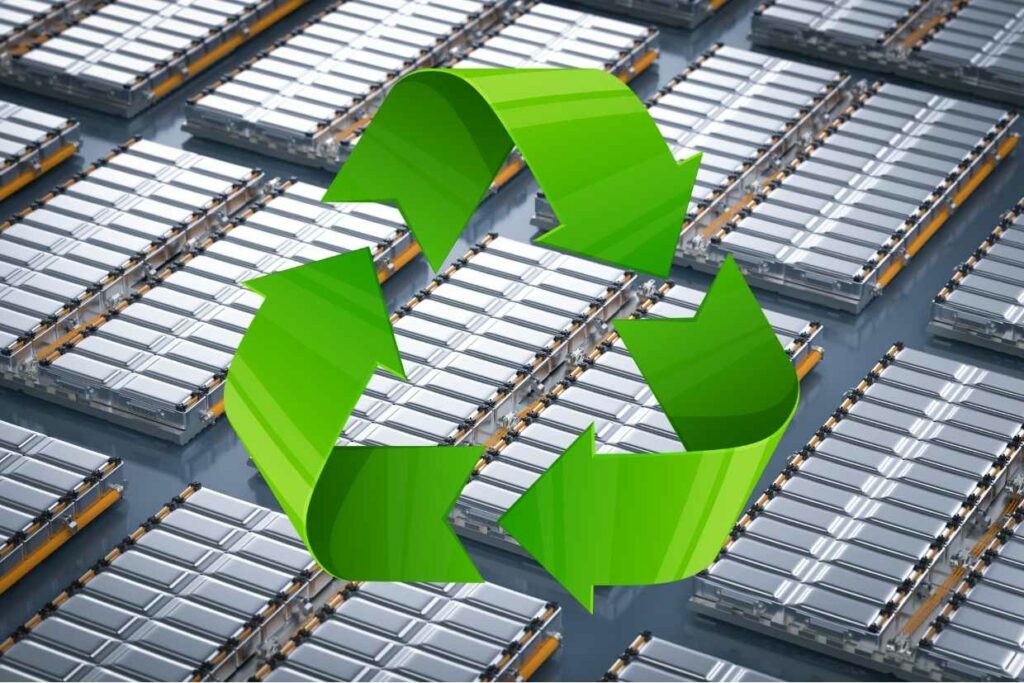Recycling Electric Car Batteries: Addressing the Sustainability Challenge
What happens after you are done using electric car batteries? They will go through recycling. What do we expect out of recycling electric car batteries? The ultimate goal is to recover the reusable resources as much as possible while consuming less energy.
There are two significant challenges that electric vehicle batteries have to encounter during recycling. The first one is the reduction of the waste generated by the battery. The other challenge is encouraging the reusing of components and resources during manufacturing.
Most companies pay attention to how to recycle electric car batteries. Some people call electric vehicle batteries time bombs. Why is that? Billions of electric car batteries will be e-waste after the end of their life, and the risk of storing them will be high. In this article, we will discuss the current status of EV battery recycling, and let’s predict how the future will be.
The predictions say that the number of electric cars will exceed 150,000,000 by 2030. During a decade, over 12,000,000 tons of lithium-ion batteries will end their lives. Therefore we should have a proper process for recycling.
The importance of the recycling process of electric car batteries impact on the environment.
Impact on the Environment.
Did you know the materials included in electric car batteries? Lithium, cobalt nickel, and rare earth metals are among those materials. These materials are valuable, but they can negatively impact the environment. Therefore you should pay attention to properly recycling these. If they get contaminated with soil all the water, the environmental risk will be very high.
Conservation of the resources.
Recycling electric car batteries can help you preserve valuable resources. Did you know that materials such as lithium and cobalt, which are used in battery production, are finite? At the same time, extracting these metals can impact the environment and society badly. But when we recycle these materials, it will reduce the requirement for resource extraction frequently.
Energy efficiency.
Production of new electric car batteries from raw materials consumes high energy. But the recycling process takes less energy when compared with the former. When you recycle, you will be able to reduce the demand for energy demand. It will also reduce greenhouse gas emissions associated with electric car battery manufacturing.
The recycling process of electric car batteries.
Sorting and collecting.
The process of recycling starts with a collection of batteries that have been used. You should ensure the batteries’ disposal and recycling process is done correctly. For this, various collection systems have been established. These systems include several recycling facilities and take-back programs. What do these facilities carry out? They are separating electric car batteries based on chemistry, size, etc. By doing so, it can facilitate efficient recycling.
Pre-processing and disassembly.
This is the process by which electric car batteries are disassembled into several components, such as cells and modules. Let us explain what pre-processing is. It involves removing external elements and exposing the battery cells. After the pre-processing, you can carry out the rest of the recycling process.
Size reduction and shredding.
When the battery is shredded, it will break the cells into small pieces. It will increase the amount of surface area, and it can make the upcoming steps easier.
Chemical leaching.
Why chemical leaching is used in this process? It is done to recover valuable metals from the battery cells. When you use leaching agents, metals such as lithium and nickel will be extracted from the shredded material.
Physical separation.
Physical separation methods include gravity separation, froth flotation, etc. We use them during the recycling process to recover to separate the recovered materials from the other metals. If you want to improve the purity of the recovered metals, we highly recommend physical separation.
Purification and refining.
You can remove the impure materials in the separated metals by using refining and purification. Through these processes, you can ensure that the recycled metal meets the expected quality standards required for producing new batteries if the makers are going through refining and beautification.
Management of the byproducts.
You should know that during any recycling process, byproducts will be produced. In electric car batteries recycling, various byproducts such as plastic and electrolytes will be generated. You should recycle or properly dispose of this material, and it will minimize the amount of waste.
What are the challenges that we will encounter during the recycling of EV charging batteries.?
Technological challenges.
Recycling batteries have to face multiple technological challenges. They include developing cost-effective processes for various battery chemistries and recovering rare metals.
Policy frameworks.
Governments worldwide should promote battery recycling by implementing various policies. A robust legislative framework can encourage correct disposal methods and recycling practices.
Collaboration.
There should be collaboration among various parties to drive innovation and establish efficiency in recycling systems. These parties include stakeholders, EV manufacturers, etc.
Research and development.
These two are necessary for improving recycling technologies. And when you do proper research, it will help you address the challenges associated with recycling EV charging batteries.
Public awareness and education.
The recycling of EV charger batteries is essential, and the public should know about it. Therefore you should educate the public about this, which will help foster a culture of responsible battery management.
Conclusion
The EV charging industry is here to stay and has many benefits. But at the same time, this industry will pose several sustainability challenges. You will have to use several recycling strategies and advanced technologies to address these challenges. Furthermore, these strategies can help you recover valuable metals, conserve available resources and reduce environmental impact. The stakeholder should work together and work for the development of the industry and establish supportive quality policies as well. Research and development are vital if you want to overcome these challenges. The demand for electric vehicles is at an all-time high. Therefore you should establish a robust recycling infrastructure. If you prioritize recycling EV charging batteries, it will also lead the electric vehicle market to sustainable growth. It will also reduce environmental risks and will foster resource conservation as well.
Several criteria are used to measure the effectiveness of different recycling methods. These criteria include the amount of raw materials that can be reused after the process. Let us take an example to explain to you. When you recycle a lithium-ion battery, you can recover more than 85% of its cobalt.





